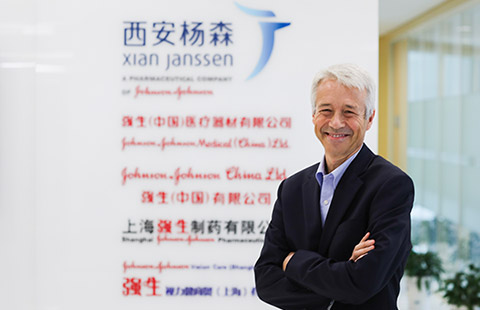Asia much more resilient to weather financial storms now: IMF official
WASHINGTON - Asia, the fastest-growing region in the world, has become much more resilient to weather financial storms with lessons learned from the Asian Financial Crisis 20 years ago, said a senior official at the International Monetary Fund (IMF).
Lessons learned
"Asian economies become much more resilient because of the lessons we learned" from the Asian Financial Crisis started in the summer of 1997, said Changyong Rhee, a well-respected economist and director of the Asia Pacific Department at the IMF.
"Now we understand the risk from the double mismatch problem, you know the maturity mismatch and the currency mismatch, and now we understand how to use flexible exchange rates as a shock absorber," Rhee told Xinhua in an interview on Friday on the sidelines of the annual meetings of the IMF and World Bank.
"I think many Asian countries learned a lot," he said, citing currency account surpluses, high levels of foreign exchange reserves and much better fiscal consolidation in many Asian economies.
However, Asia "should not be complacent," as credit expansions in the region after the 2008 global financial crisis are "quite rapid" and there are several frontier and developing Asian economies which haven't experienced the Asian financial crisis, according to Rhee.
"I wouldn't say that Asia is completely immune from the possibility of a crisis, but definitely Asia is much better equipped, much more advanced now, and they are much more resilient" to weather potential financial storms, he said.
In Rhee's view, Asia is also in a stronger position to handle the monetary policy normalization in the United States, which has raised interest rates four times since the recent financial crisis and has launched the process of shrinking the Federal Reserve's 4.5-trillion-US-dollar balance sheet this month.
As long as the process is gradual and well-communicated with the support of US economic recovery, Rhee believed, the impact of US monetary policy tightening on Asia "will be manageable."
The "well-coordinated, well-communicated and gradual normalization" of US monetary policy will actually help many Asian economies to manage potential risks, he said.
Global trade improves
Rhee said, "Global trade has improved" over the past several months compared with the IMF's assessment in April, as many countries, including the United States, now "understand the importance of open and fair trade."
The recent recovery of the US and European economies has helped boost international trade and has caused a quite virtuous cycle in Asia, which depends heavily on exports, said the official.
Together with increased exports to the US and Europe, consumption, investment and imports are also increasing in Asia, he said.
However, there is some concern about how long the growth of Asian exports will continue, as evidence shows that the recent rebound in trade owes to some temporary factors such as the recovery in commodity prices.
Meanwhile, there is uncertainty about trade negotiations and there is some movement toward more protectionist measures in some advanced economies, he warned.
"That's a real risk, but I think the risk is much reduced compared with what we awarded in April," Rhee said, hoping US President Donald Trump's upcoming visit to China in November will deliver positive news to the global economy.
Economic rebalancing in China
In terms of economic growth and economic progress in China, Rhee said that "Chinese leaders have done a tremendous job" over the past five years.
China has made "significant progress" in rebalancing from the export sector to the domestic demand, said Rhee.
He said China alone now accounts for 34 percent of global growth and has become its largest contributor.
But China is still relying too much on the investment growth, he warned, suggesting China could build a social safety and boost consumption to move towards more balanced domestic demand-led growth.
In its latest World Economic Outlook released earlier this week, the IMF expected the Chinese economy to grow 6.8 percent in 2017 and 6.5 percent in 2018, both 0.1 percentage point higher than its previous forecast in July.
Rhee said the upside potential for China's economic growth stems from higher-than-expected export growth to advanced economies and the so-called supply side reforms.
While gains from structural reforms will come with a time lag, it has really a positive impact on China's economic growth in the medium-term, he said.
In terms of major downside risks, Rhee said it's a "big task" for China to rein in the rapid credit growth so as to "have a soft landing."
International use of Chinese yuan
It has been one year since the Chinese yuan was included into the IMF's special drawing rights basket in last October, which was a milestone for the global economy and a big step in the internationalization of the Chinse yuan.
"Many people say that, you know, after the inclusion of the yuan, yuan use hasn't increased very much, but I think that's too myopic," Rhee said, adding it's not wise to assess the international use of the yuan by just looking at the quarterly data, as the internationalization of the yuan will take time.
Given the size of China's trade and the Chinese economy, "I'm very confident that the yuan's use in the global market will increase," he said, recommending China adopting a gradual approach in capital market liberalization to promote the global use of the yuan.
"If you open too early and you'll have some significant risk, if you open too late then you'll have a loss of efficiency and you may lose the momentum for the reform," he said.
"I'm pretty confident" that China has the right policies to proceed with the use of the yuan in the global economy, he added.
Belt & Road initiative
China's Belt and Road initiative is very important globally and in the region for the low-income and developing countries, according to Rhee.
Asia definitely needs more infrastructure investment and Asia's growth model has also proved that having the right infrastructure is a key element of economic development, he argued.
Rhee said he believes that finding efficient infrastructure investment projects is the key to the increase of growth rates in the long-term and the success of the Belt and Road initiative.
"I think IMF together with other multilateral institutions will be willing to help, but we also have to work together to find the right investment," he said.
Proposed by Chinese President Xi Jinping in 2013, the Belt and Road Initiative aims to build trade and infrastructure networks connecting Asia with Europe and Africa on and beyond the ancient Silk Road routes. It comprises the Silk Road Economic Belt and the 21st Century Maritime Silk Road.

























